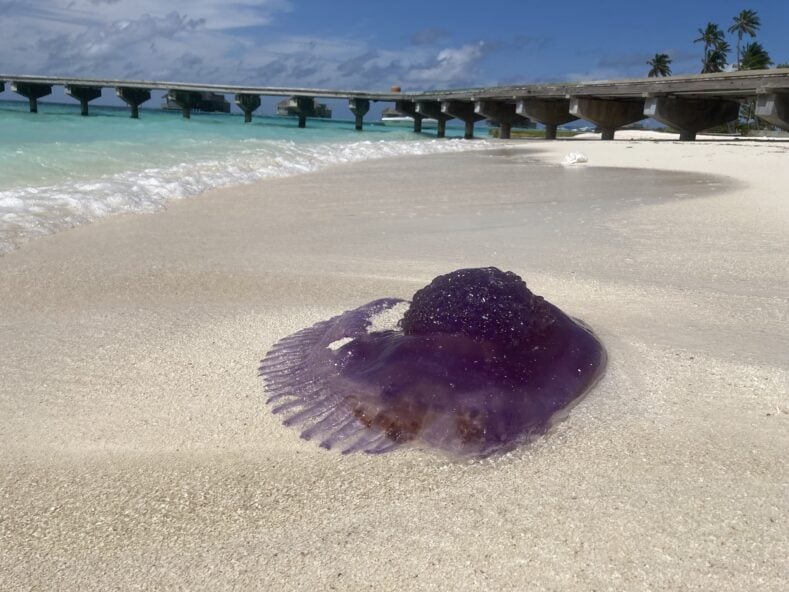Over the last few weeks, our guests and hosts here at Gili Lankanfushi have been excited to spot the occasional huge and very beautiful purple crown jellyfish (Cephea cephea) in the blue waters of the lagoon. These big lumps of jelly are totally harmless to humans but can still pack a powerful punch when it comes to their prey.
The purple crown jellyfish is carnivorous and will feast on any plankton, algae, invertebrate eggs and shrimps that it can catch and paralyze with its stinging cells (nematocysts). It is known to be one of the most venomous species of jellyfish for its prey (luckily not for humans!), carrying over 100 white tentacles of different lengths.
As well as here in the Indo-West Pacific, this jelly can also been found in abundance in the Red Sea and in the eastern Atlantic Ocean. They thrive in cool waters and can be found as deep as 1 km down in the day, while coming towards the surface at night.
Also known as the cauliflower jellyfish, this whopper (see picture below) washed up on our shore last week and measured a massive 65 cm across, which is about as big as they come! The lifespan of purple crown jellyfish is only 3 to 6 months and they are pelagic, which means they spend most of their life in the deep sea. As a result, we tend only only see these jellies when they wash up on our beaches.

Jellyfish can strand on the beach for many reasons. If the winds and tides are stronger than their ability to swim, then they will end up on the shore. Often, they will be found to have been damaged already by wave action or predators. Once on the shore, jellyfish will disappear very quickly as the water that makes up their body evaporates. The purple crown jellyfish is 95% water and like other jellyfish, has no heart, brain, blood or gills.
Despite being mainly water, the purple crown jellyfish is eaten as a delicacy by people in Japan and China. Jellyfish have even been marked as a sustainable food for the future due to their abundance in the ocean, being rich in antioxidants and nutrients and low in calories. Meanwhile, here in the Maldives, it’s our turtle populations who love to enjoy this particular purple treat. Seeing these jellyfish is always a good sign that there is plenty of food available for our resident green and hawksbill turtles here on the house reef at Gili Lankanfushi!